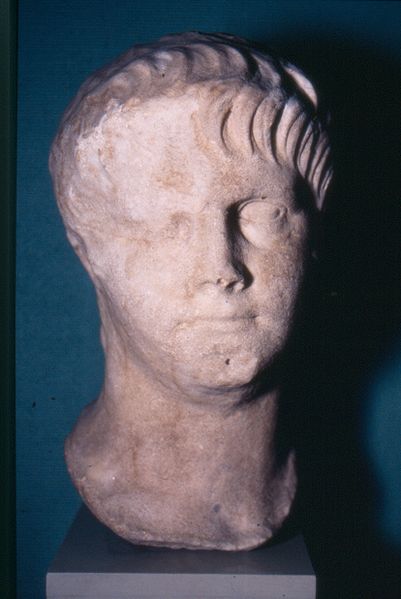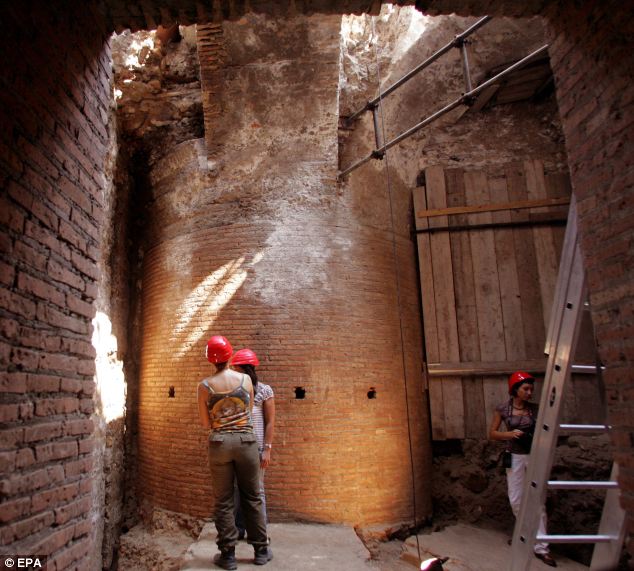
Archaeologists in Rome investigating Emperor Nero's Domus Aurea, or "Golden House", have discovered a huge circular room, with the remains of spherical mechanisms installed beneath its floor.
They think this must be what's left of Nero's legendary revolving dining room. It was written about by ancient historians such as Suetonius, but noone ever knew for sure if it really existed. Suetonius said the dining hall was huge and that it revolved "night and day in imitation of the celestial bodies". Nero used it to hold debaucherous banquets that lasted "from noon until midnight".
The Domus Aurea was a collection of party villas, that Nero built in the heart of ancient Rome after much of the city was destroyed in a fire in 64 AD. They were set in landscaped gardens with an artificial lake in the centre. One of the most impressive buildings had a great octagonal hall with a domed roof, and it had been thought that this could be the revolving banquet hall that Suetonius was talking about.
But now archaeologists, led by Mariantoinetta Tomei and Francoise Villedieu, have discovered a new, circular structure; a spectacular find that's unlike anything seen before at a Roman archaeological site. The room is more than 16 metres across, and was supported by a 4-metre thick pillar (see pic below) in its centre. The archaeologists have apparently discovered "four spherical mechanisms" beneath what would have been the room's wooden floor. They are still investigating exactly how the whole thing worked, but they think this machinery must have driven the room's rotation, probably powered by running water.
 I've been meaning to post about all this for a while - the find was announced a couple of weeks ago. It got a bit of news coverage at the time (you can watch short videos here and here) though not as much as I would have expected. There's an excellent account of the find, including an excerpt from Suetonius's original description, over at eternallycool.net.
I've been meaning to post about all this for a while - the find was announced a couple of weeks ago. It got a bit of news coverage at the time (you can watch short videos here and here) though not as much as I would have expected. There's an excellent account of the find, including an excerpt from Suetonius's original description, over at eternallycool.net.
Nero was by all accounts a nightmare as Emperor. He ruled Rome in the first century AD, from 54 to 68, and he was vain, violent and probably deranged. He is said to have kicked his poor wife Poppaea to death, then castrated a freedman who was unfortunate enough to look like her, to act as her replacement. He also loved to perform in public, and once held a whole set of games just to celebrate the shaving of his beard.
Part of the problem may have been that Nero believed he was divine, in particular some scholars think that he identified himself as the Roman Sun god, Sol. So riding in his revolving celestial banquet hall would have been a very important symbolic statement. It reminds me of a theory about Rome's Pantheon, which I wrote about earlier this year (see my New Scientist article, and my blog post). This imposing temple came a little bit after Nero's time - it was completed in AD 128 - and consists of a cylindrical chamber topped by a domed roof. An opening in the top lets through a dramatic shaft of sunlight, which some believe acted as a colossal sundial, marking the timing of the equinoxes. This is thought to have involved similar symbolism, intended to elevate emperors who worshipped there into the celestial realm of the gods.